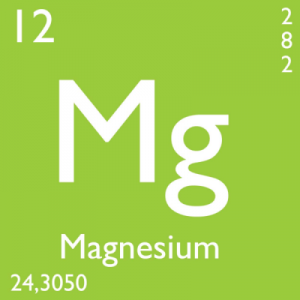Beginning around age 30, we lose 1/2 pound of muscle mass each year. By the time we reach the age of 50, that shrinking muscle has climbed to 1 pound a year. If it just disappeared, that would be one thing, but it doesn’t. When we lose muscle, it is replaced by fat. That’s why you can weigh the same as you did 15 years ago, but your clothes are too tight.
For example, a woman with a sedentary lifestyle will have lost 15 pounds of muscle by the time she turns 50. If her weight has remained the same, this means she will have replaced that 15 pounds of muscle with 15 pounds of fat. That’s how the muffin top is born!
The main strategies to combat muscle loss are:
A diet high in protein.
Moderate caloric intake. (Use our free calorie calculator in the sidebar!)
Cardio exercise 3 times per week.
Strength training 2 times per week.
There is a somewhat forgotten mineral that can play an important role in building or retaining lean muscle mass. Magnesium is an essential mineral found in our brains, muscles, bones and all of our tissues. Magnesium is key to over 300 critical body processes, including boosting muscle, nerve and heart function. Magnesium is also necessary for producing energy, control blood sugar, healthy heart functions and bone structure. It is also a natural anti-inflammatory!
When it comes to building muscle, magnesium is necessary for muscle contractions during training. It is also a necessary component of muscle tissue synthesis, which means rebuilding lean muscle tissue and is very valuable when the goal is to build bigger muscles.
Most Americans consume sufficient amounts of magnesium, but it is worth checking to see if you are getting enough in your diet. It is especially important for certain individuals with conditions that benefit from higher levels of magnesium in their diets. People with Type 2 Diabetes, gastrointestinal diseases, excessive alcohol intake, adolescent girls and older men need to be knowledgeable about their magnesium needs. Some of the issues that insufficient magnesium can contribute to are, as above, Type 2 Diabetes, high blood pressure, migraines, osteoporosis and some studies even suggest a risk of depression.
Federal nutrition guidelines suggest that adult women consume 310–320 milligrams of magnesium per day, while adult men should take in 400–420 mg per day.
Click here to read an excellent report on magnesium from the National Institute of Health. https://ods.od.nih.gov/factsheets/Magnesium-HealthProfessional/




